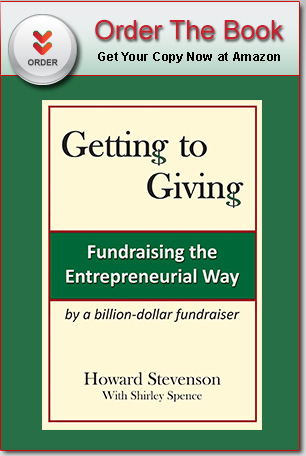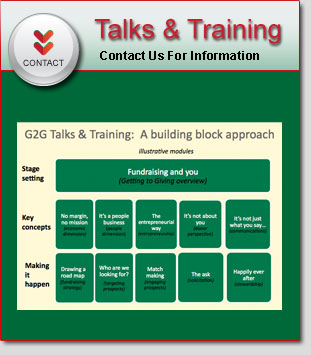There typically are three drivers of corporate giving: the CEO, HR and/or Marketing.
Sometimes, it’s essentially individual giving; the CEO decides how much and who to give to. That is often critiqued by employees and snubbed gift recipients. As a fundraiser, getting access to and understanding the giving priorities of the CEO are the keys.
Sometimes, it’s more HR-driven. The company offers to match employee contributions to certain organizations, or rallies volunteers for a particular cause. The goals are good employee morale, and a solid company image. Your job: Convince the company that your cause – and you – can help.
Lately, a lot has been turned over to the Marketing department. Cause-related marketing, it’s called.
It’s tricky for both the sponsor and the sponsee, however, and lawyers may be involved (not good). If you’re a nonprofit making a pitch, your job is to demonstrate that your cause has meaning for the company’s target customers.
On a grassroots level, most companies with a local presence want to contribute to the community (altruistic view) or pretend to care (cynical view). Either way, even Walmart will donate to the Little League. Go for it.
The “company town” is a special case. If a business is the sole or major employer, it often plays a significant role in local education, hospitals, libraries, housing, even the arts. That may reflect a sincere sense of civic responsibility, but also has an element of self-interest. The business needs a well educated, healthy work force and the ability to attract and retain outside talent.
That can be is a two-edged sword, however, as the story of Millinocket’s rise and fall illustrates.
Millinocket is a Maine town that was essentially built around a new pulp and paper plant. Incorporated in 1901, it prospered through the 20th century. At its peak, Millinocket’s population numbered 7,742. Then, in early 2003, the mill closed. By 2012, the population had dwindled to 4,447, despite efforts to reinvent itself as a four-season resort town.
Finally, don’t underestimate the value of non-cash corporate contributions. Pro bono consulting or legal services, use of office space or other facilities, event catering by a local restaurant, athletic equipment from the sports store, reduced admission or program fees… it all helps.



